Mechanism of Liangxue Huayu decoction in treatment of age-related macular degeneration based on network pharmacology and clinical validation
2022-09-15ZiYangChenYingYingLinYiHuangZhengFaJieKeShengChenYanHongHu
Zi-Yang Chen ,Ying-Ying Lin ,Yi-Huang Zheng ,Fa-Jie Ke ,Sheng Chen ,Yan-Hong Hu*
1Eye Hospital of Chinese Academy of Traditional Chinese Medicine,Beijing 100040,China.2The Second People’s Hospital Affiliated to Fujian University of Traditional Chinese Medicine,Fujian 350001,China.
Abstract Background: This paper investigates the mechanism of Liangxue Huayu decoction treating age-related macular degeneration through network pharmacology and clinical verification.Methods:The potential targets of Liangxue Huayu decoction were retrieved by the BATMAN-TCM database,and age-related macular degeneration-related disease targets were collected using the OMIM,GeneCards,and CTD databases.The intersection of targets for Liangxue Huayu decoction for age-related macular degeneration was performed using the online tool Venny2.1.0.Protein-protein interaction network was drawn using the String database.And core targets were obtained with the CytoNCA plugin.The gene ontology and Kyoto Encyclopedia of Genes and Genomes enrichment analyses were performed using the Metascape database.Finally,targets of Liangxue Huayu decoction for age-related macular degeneration were identified in clinical research.Results:In this study,832 potential action targets and 9,475 age-related macular degeneration-related disease targets were screened,and 575 intersection targets of Liangxue Huayu decoction and age-related macular degeneration were obtained.Protein-protein interaction network analysis showed that 15 core targets include chemokine 8,interleukin 1,histone deacetylase 2,estrogen receptor 2,and glutamate ionotropic receptor NMDA type subunit 1,et al.Gene ontology enrichment analysis included 2,727 biological processes,434 molecular functions,and 206 cellular components.Kyoto Encyclopedia of Genes and Genomes enrichment analysis selected 107 signaling pathways.Clinical validation showed that peripheral blood chemokine 8 and interleukin 1 levels were significantly lower after age-related macular degeneration patients compared with before treatment,and the difference was statistically significant(tchemokine8=12.684,tinterleukin1=11.405,all P <0.001).Conclusion:By treating age-related macular degeneration with multiple targets and multiple pathways,Liangxue Huayu decoction can down-regulate the expression of inflammatory factors and treat age-related macular degeneration,which provides a basis for further studying the action mechanism of regulating age-related macular degeneration.
Keywords: Liangxue Huayu decoction;age-related macular degeneration;network pharmacology;interleukin-1β;chemokines 8
Highlights
This work explored the pharmacological action mechanism of Liangxue Huayu(LXHY)decoction in the treatment of age-related macular degeneration(AMD)by network pharmacology.LXHY decoction can down-regulate the expression of inflammatory factors and treat AMD.This study suggests that AMD is linked with mitochondrial function,and the LXHY decoction can affect the mitochondrial function,which plays an important role in regulating the expression of inflammatory factors.This is worth to be verified by experiment in the future.
Background
AMD is the main irreversible blinding eye disease in middle-aged and elderly people,and the number of patients will increase to more than 55 million by 2050 [1].AMD is divided into dry AMD and wet AMD.The wet AMD or neovascular AMD is mainly characterized by choroidal neovascular growth,macular hemorrhage,permanent central vision damage,and organic scar.Therefore,the prevention of wet AMD has been difficult in the field of ophthalmology.
Studies have shown that traditional Chinese medicine (TCM) plays an advantage in the treatment of AMD[2].In TCM,AMD subordinates to the“Shi Zhan Hun Miao”category.Clinically,AMD is manifested as a combination of asthenia and sthenia syndrome,with liver and kidney Yin deficiency as the foundation and virtual fire burning collaterals as the mark.Therefore,the main treatment of AMD is to cool blood,remove stasis,tonifying qi and nourishing Yin [3].And LXHY decoction is the representative decoction.In early study,it was found that LXHY could improve the eyesight and clinical condition[4–5].However,the molecular mechanisms of action are still unknown.
Network pharmacology provides an ideal paradigm for studying TCM prescriptions and their therapeutic targets [6,7].By this means,the underlying mechanisms of TCM formulations were illuminated.In this paper,we explore the underlying mechanisms of LXHY by a network pharmacology approach.Firstly,the targets of LXHY were selected via score cutoff in Bioinformatics Analysis Tool for Molecular Mechanism of TCM platform.Secondly,the targets were obtained by integrating the drug and the AMD targets.These predicted targets were mapped into a drug-target interaction and validated by gene ontology (GO) and pathway enrichment.Since then,the targets have been used to construct an integrated pathway.Finally,an integrated pathway was established to illuminate the molecular pathogenesis of LXHY on AMD,which provided a new approach for TCM modernization.
Material and methods
Screening the targets of LXHY
The formula of LXHY consists of Shengpuhuang(crude Pollen Typhae,SPH),Jianghuang (Curcumaelongae Rhizoma,JH),Danggui (Angelicae Sinensis Radix,DG),Tusizi (Cuscutae Semen,TSZ),Huangqi (Astragali Radix,HQ),Gouqizi (Lycii Fructus,GQZ),Chuanxiong (Chuanxiong Rhizoma,CX),Danshen (Salviae Miltiorrhizae Radix et Rhizoma,DS),Banxia (Pinelliae Rhizoma,BX) and Zhebeimu (Fritillariae Thunbrgii Bulbus,ZBM).The Bioinformatics Analysis Tool for Molecular Mechanism of TCM (BATMAN-TCM,http://bionet.ncpsb.org/batman-tcm/index.php) platform was used to predict action targets of LXHY.Currently,the rule of TCM targets predicted in studies was based on a score cutoff=55 [8].Therefore,in this study,the complete pinyin of each herb was input according to the order of the king,minister,assist and envoy,and the targets were also predicted atP<0.05 and score cutoff=55.
Screening the targets of cataract
Information on AMD-related target genes was screened by the Human Gene Database named Genecards (http://www.genecards.org/),the Comparative Toxicogenomics Database named CTD(http://ctdbase.org/),and the Online Mendelian Inheritance in Man Database named OMIM (http://www.omim.org/).The database was searched using the keywords“age-related macular degeneration”after collecting and removing duplicates,the results were identified as the AMD-related genes[9].
Targets of LXHY in treatment of AMD
Targets of LXHY and AMD were used to draw venny figure using the online tool Venny 2.1.0(https://bioinfogp.cnb.csic.es/to-ols/venny/index.html).And their intersection as potential targets of LXHY in the treatment of AMD.
Protein-protein interaction (PPI) network construction
To illustrate the role of LXHY in the treatment of AMD,target proteins were uploaded to the online STRING 10.5 (https://string-db.org/)database to obtain protein interaction information.The STRING database is a database that stores known and predicted protein interactions,including direct and indirect interactions between proteins.It has a score for each protein interaction.The higher the score,the more mutual the interaction between proteins and the higher the confidence level [10].Therefore,the high-confidence protein interaction data with a score of >0.950 were selected and imported into Cytoscape 3.5.1 software to construct the PPI network.Further,the key genes were obtained by the CytoNCA function analysis in Cytoscape 3.7.2 software.
GO and Kyoto Encyclopedia of Genes and Genomes (KEGG)pathway enrichment analyses
The Metascape data platform (https://metascape.org/) was used for the GO and KEGG enrichment analyses of proteins in the PPI network.The main signaling pathways for the target involved were obtained with a threshold ofP<0.01.
Clinical observation and verification
According to the inclusion criteria and the exclusion criteria,15 patients(9 males and 6 females)with AMD(15 eyes)were recruited in the ophthalmology department of the Second People’s Hospital Affiliated to Fujian University of Traditional Chinese Medicine(SPHFJP-J2019018-01) [4].The oldest is 73 years of age,and the youngest is 53,average(66.2±5.2)years old.All patients took LXHY decoction orally 3 months.And peripheral serum samples were collected before and after treatment.3–5 mL venous blood was taken on an empty stomach condition,centrifuged (2,352 xg) for 10 min,and stored collected serum at-70℃for reserve.All the patients in this study signed the informed consent form and were approved by the hospital ethics committee.This study was conducted in complying with the National Instituted of Health guidelines for the care.The expression levels of peripheral serum interleukin 1 (IL-1) and chemokine 8 (CXCL8) were measured by solid-phase sandwich Enzyme-linked immunosorbent assay (ELISA) and operated in strict accordance with the instructions of the kit.The IL-1 and CXCL8 kits were provided by Wuhan Doctor De Co.,Ltd.
Results
Drug-disease target prediction
In this study,as shown in Figure 1,a total of 832 target genes from LXHY and 9,475 target genes for AMD were obtained after screening.And according to the intersection,there were 575 target genes for LXHY in the treatment of AMD.
Construction of the PPI network
The above potential targets of LXHY for AMD were introduced into the String database to obtain a PPI network map,as detailed in Figure 2.Then the interaction results were analyzed by CytoNCA function in Cytoscape 3.7.2 software to obtain 15 key targets,as shown in Figure 3.The darker the color indicates,the more important the target is.So the CXCL8 and IL-1B are vital in these key targets.
GO enrichment analysis
In the GO analysis,4,235 items were collected by GO enrichment analysis,including 2,727 biological processes (BP),434 molecular functions (MF),and 206 cell components (CC).As can be seen from Figure 4,the vertical coordinate representsPvalue,and the horizontal coordinate represents GO terms.The main enrichment items of common targets in BP include oxidoreductase activity,vitamin binding,organic acid binding,cation transmembrane transporter activity,neurotransmitter receptor activity,ligase activity and anion transmembrane transporter activity.The main enrichment items of the common targets in CC include ion channel complex,cell body,mitochondrial matrix,mitochondrial envelope,receptor complex,membrane raft,sarcolemma,cytoplasmic vesicle lumen and organelle outer membrane.And the main enrichment items of common targets in MF are small molecule biosynthetic process,organic hydroxy compound metabolic process,circulatory system process,response to extracellular stimulus,response to xenobiotic stimulus,cellular response to nitrogen compound and response to inorganic substance.
KEGG enrichment analysis
107 signaling pathways (P<0.05) were obtained after KEGG enrichment analysis of common targets of LXHY decoction in treating AMD.Pathways include neuroactive ligand-receptor interaction,cAMP signaling pathway,calcium signaling pathway,carbon metabolism,dopaminergic synapse,tumor necrosis factor (TNF)signaling pathway and mitogen-activated protein kinase (MAPK)signaling pathway.Figure 5 lists the top 30 KEGG pathways based on false discovery rate (FDR) values.The red curve is the number of core targets,such as three core targets in each calcium signaling pathway.The results indicate that the active ingredients of LXHY might be used to treat AMD,and they act on these signaling pathways.
Clinical observation and verification
According to the prediction of core targets,the CXCL8 and IL-1 are the most important target.Therefore,the effect of LXHY decoction in AMD on CXCL8 and IL-1 was studied.Before treatment,peripheral serum CXCL8 was(9.06±1.21) pg·mL-1and IL-1 was(18.39±2.89)pg·mL-1.After 3 months of treatment,CXCL8 in peripheral serum was(4.58±0.77) pg·mL-1and IL-1 was (11.49±2.89) pg·mL-1.After paired T test,both CXCL8 and IL-1 in peripheral serum levels after 3 months of treatment were significantly lower than before,which was statistically significant(tCXCL8=12.684,tIL-1=11.405,allP<0.001).
Discussion
AMD can lead to a sharp decline in patient vision,causing a serious impact on patients’life and work.Currently,the clinical treatments of AMD include neoangiogenesis inhibitors,photodynamic therapies and some adjuvant therapies.However,these are expensive,accompanied by certain risks,unstable treatment effects and other disadvantages.TCM has the advantages of the multi-action target,multi-channel and multi-component,which has significant advantages in treating AMD.Previous studies show that LXHY decoction can improve AMD vision.Due to the characteristics of multiple components and multi-action targets,the pharmacological mechanism of cold blood stasis prescription for AMD is still unknown.
HOPKINS,a British pharmacologist,took the lead in proposing network pharmacology in 2007.To explain the complex network relationship between “drug-target-disease”,and predict the mechanism of action after the drug intervention from a multi-dimensional understanding of the molecular basis of disease,network pharmacology is based on system biology and multi-directional pharmacology,using a variety of omics,high-throughput screening,network visualization and network analysis technology [11].Through the network pharmacology analysis,fifteen main targets were found in this study,such as CXCL8 and interleukin 1β (IL-1β).Nowadays,the mainstream theories about AMD include immunity and inflammation,the extracellular segment transformation of retinal photoreceptors,oxidative stress theory,and vascular pattern theory [12].It was recently found in the etiological study of AMD that activation of NLRP3 inflammasomes was seen in either blue light or hydrogen peroxide-induced neovascular AMD models,and NLRP3 regulated the maturation and secretion of IL-1[13–15].As a key cytokine involved in innate and adaptive immunity,IL-1 is produced by a variety of cells and is involved in the associated inflammatory reaction [16].The first step of activation of IL-1 is that translocates the expression of the IL-1β precursor (pro-IL-1β).Then cleaves pro-IL-1β and acts by paracrine on producing cells or peripheral cells.Besides,IL-1 could rapidly induce cytokines of different cell types such as CXCL8 [17].It has been shown that there may be an association between the CXCL8 gene polymorphism and AMD [18].Another study that investigated the profile of cytokinine and chemokine expression and secretion profile in peripheral blood monocytes in wet AMD patients and the relationship between cytokinine/chemokine expression profile.The profile of the clinical phenotype of wet AMD found that peripheral blood mononuclear cell PBMC secreted higher levels of CXCL8 compared to controls with wet AMD,the percentage of CD11b+,CD3-IL-8+in wet AMD patients and PBMC produced the highest level of CXCL8 in PBMC in wet AMD patients without macular fibrosis [19].Network pharmacological studies show that LXHY decoction may treat AMD by regulating core gene expressions such as CXCL8 and IL-1.Furthermore,it was found that through clinical studies,LXHY decoction could down-regulate the peripheral blood levels of CXCL8 and IL-1.
Mitochondria,as the main cellular organelle,regulates the oxidoreductase activity,calcium signaling,cyclic guanosine monophosphate-Protein Kinase G (cGMP-PKG)signaling,glutamatergic synapses,and the citric acid cycle [20–22].Recent studies have found that mitochondria abnormalities can lead to AMD[23–24].In GO enrichment,we found that the biological targets of LXHY in treating AMD involved the regulation of oxidoreductase activity,vitamin binding,organic acid binding,cation activity and anionic transmembrane transporters,neurotransmitter receptor activity,and ligase activity.
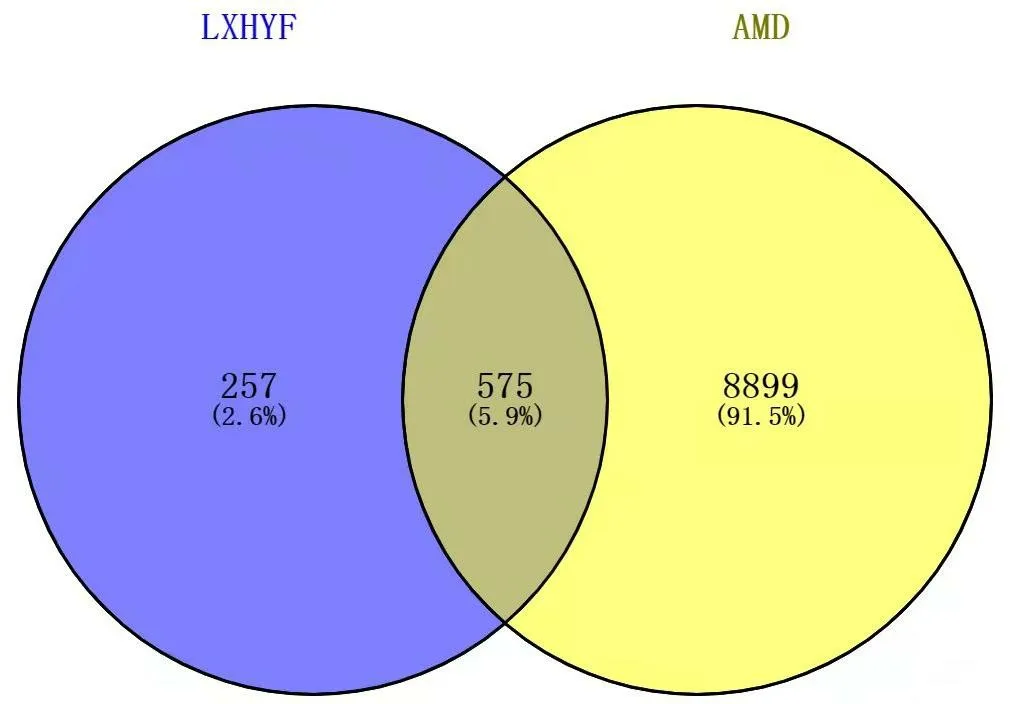
Figure 1 Venn diagram of the targets.LXHY,Liangxue Huayu;AMD,age-related macular degeneration.
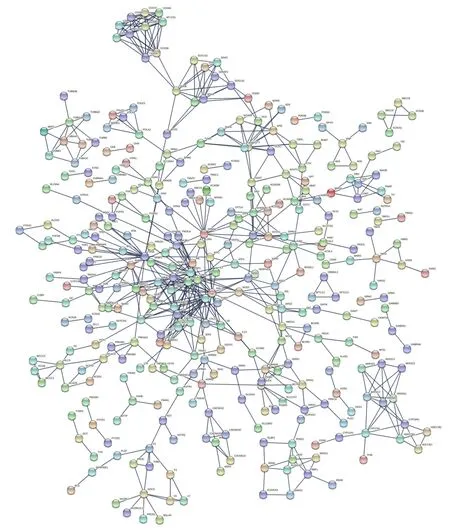
Figure 2 PPI network of the target proteins.PPI,protein-protein interaction.
And the main MF these targets played include small molecule biosynthesis processes,the metabolism of organic hydroxyl compounds,circulatory system processes,responses to extracellular stimuli,cellular responses to nitrogen compounds and inorganic substances,etc.Moreover,the main cellular components involved include the ion channel complex,cell body,the matrix and envelope of the mitochondria,the receptor complex,the cytoplasmic vesicle cavity,the outer organelle membrane,etc.In KEGG enrichment,we also found that LXHY decoction may treat AMD through neuroactive ligand-receptor interactions,calcium signaling,cGMP-PKG signaling,cholinergic synapses,advanced glycosylation end products-receptor of AGEs (AGE-RAGE) signaling,purine metabolism,TNF signaling,estrogen signaling,glutamatergic synapses,citrate cycle(tricarboxylic acid cycle,TCA cycle),and MAPK signaling.The results of this study suggested that regulating cell mitochondrial function may be the mechanism of LXHY decoction on AMD.
Furthermore,in the “complement-metabolism-inflammasome axis”proposed by Giuseppina Arbore et al,abnormal cellular metabolism plays an important “bridge” role between overactivation of the complement system and inflammasome activation [25].The metabolism in these includes lysosomal and mitochondrial metabolism.The mechanism for the treatment of LXHY decoction in this study involved the regulation of mitochondrial function and the level of inflammatory factors.Although it has been shown through clinical studies that LXHY does reduce the levels of inflammatory factors IL-1 and CXCL8 in AMD patients,the regulatory mechanism of mitochondria and whether LXHY decoction down-regulates inflammatory factor levels by regulating mitochondrial function is needed to be confirmed by further experimental studies.
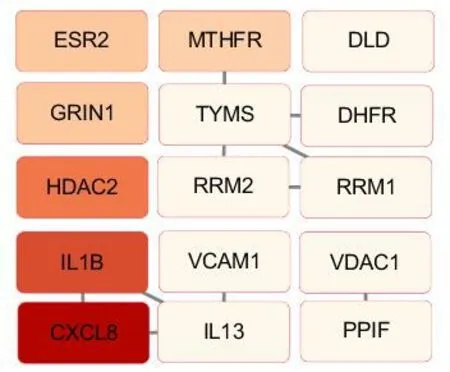
Figure 3 The key targets of LXHY for AMD.LXHY,Liangxue Huayu;AMD,age-related macular degeneration.The deeper the color represents the more intense core.
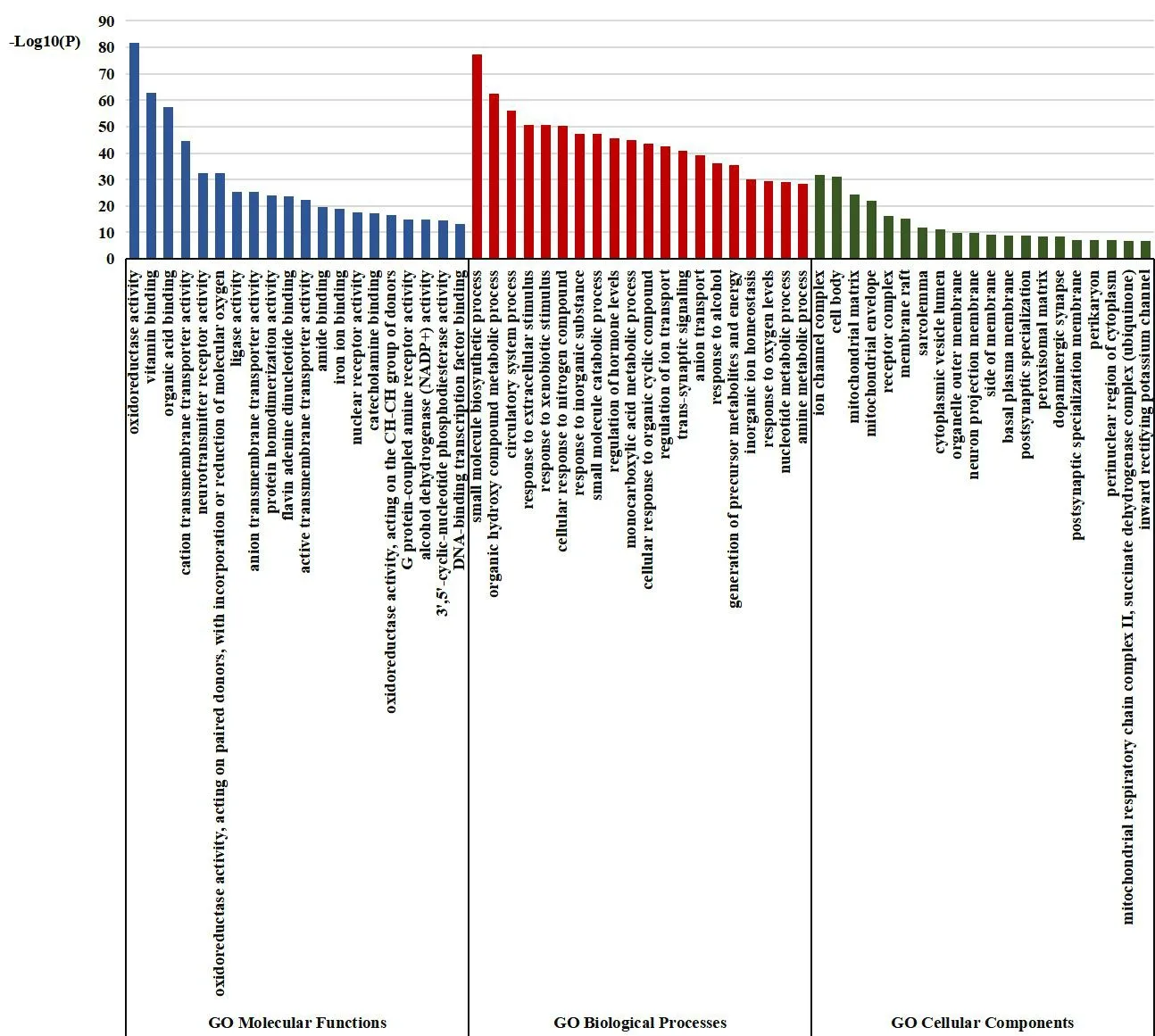
Figure 4 Bar chart of GO enrichment analysis of common targets.GO,gene ontology.
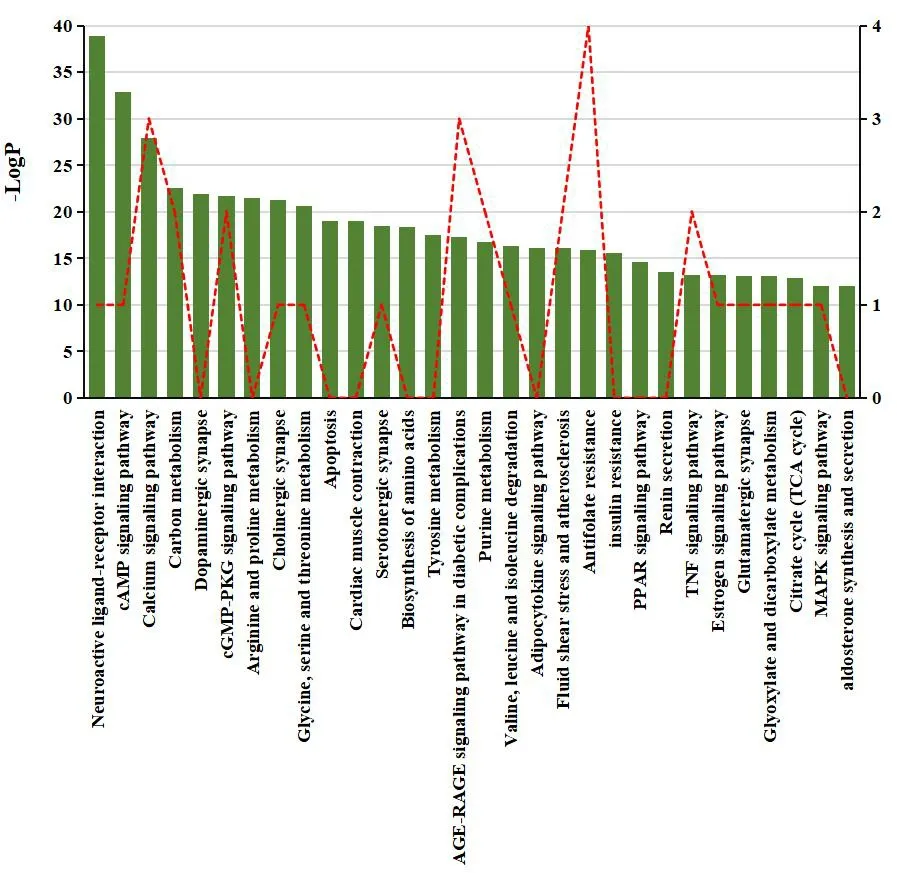
Figure 5 KEGG analysis of genes.The X-axis means the KEGG biological process terms of the target genes (adjusted P-value<0.01).The left Y-axis represents the gene radio of these terms and the right Y-axis is the number of core targets in terms.KEGG,Kyoto Encyclopedia of Genes and Genomes.MAPK,mitogen-activated protein kinase;cGMP-PKG,cyclic guanosine monophosphate-Protein Kinase G;AGE-RAGE,advanced glycosylation end products-receptor of AGEs;cAMP,cyclic adenosine monophosphate;PPAR,peroxisome proliferators-activated receptors;TNF,tumor necrosis factor.
In addition,there were some deficiencies in this research.In the clinical verification,the number of cases completing the study was small due to the long-time of patients taking medicine.In the future,more cases are needed to be included,and other samples(e.g aqueous humor) will be tested.Moreover,animal experiments would be carried out to confirm the network pharmacology prediction results.
Conclusion
In this study,we utilized a network pharmacology approach with target prediction,network and pathway analysis to explore the therapeutic mechanism of LXHY on AMD.The result revealed that LXHY exerted a therapeutic effect via down-regulating the expression of inflammatory factors.Meanwhile,the approach applied in this work offers a new research orientation for the LXHY mechanism in AMD.
杂志排行
Drug Combination Therapy的其它文章
- Exploring the mechanism of action of Danggui Shaoyao San in the treatment of polycystic ovary syndrome based on integrated pharmacology and molecular docking
- Significance of Siddha traditional oil bath(ennaimuzhukku)-a review article
- Clinical efficacy of Qingre Quzhuo capsule in the treatment of non-alcoholic fatty liver disease
